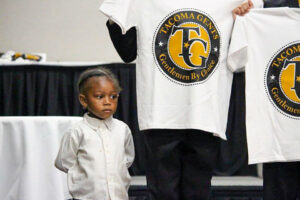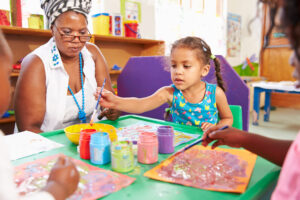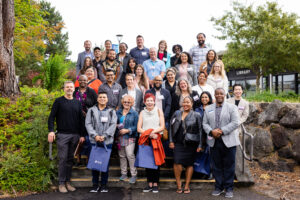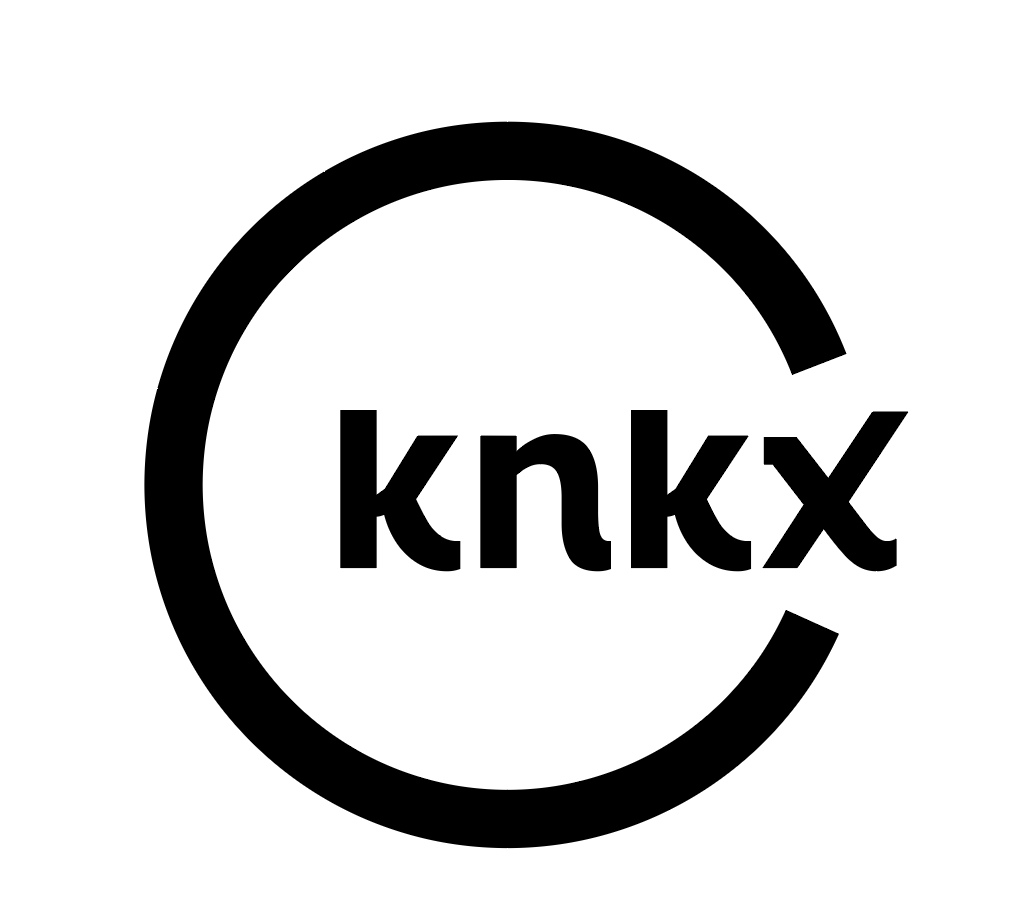By Tacoma Council Member Kiara Danials, Mayor Victoria Woodards and Dr. Tafona Ervin.
This post was originally published in the Tacoma News Tribune.
A city that cannot keep its youth safe is a city that has given up on its future. Right now, Tacoma is facing a spate of violence among our youth that is nearly unprecedented in our city’s history. But we would not be the City of Destiny if at any point in our history we had ever given up on our future. That is why we are calling upon our community to join together today in a public campaign motivated by a shared commitment: We will not give up on our youth. We must keep our youth safe.
Tacoma has risen to the occasion so many times on behalf of our youth in the past, whether launching the Safe Streets program in response to a spike in crime thirty years ago or raising high school graduation rates from 55% in 2010 to 90% in less than a decade. We have no doubt that our community is ready to rise to the occasion and commit to our youth and their future once again.
While there is much work to be done to ensure that we as a community can deliver on this commitment, securing the commitment from the community is the necessary first step.
The data alone is stark, and it is urgent. In 2020, coincident with the arrival of the Covid-19 pandemic, homicides in Tacoma increased by 82%, and then increased 10% on top of that in 2021. In the past 12 months, violent street crime has doubled. As many as 700 youth are gang affiliated, joining a gang at the average age of 13.
Beyond the data, however, is the widespread feeling among our youth that it’s just not safe out there. Our youth are reluctant to play outside in their own neighborhoods out of fear.
This is something none of us should be willing to accept.
While the factors behind the surge in violence of the 1990s were easier to isolate, the current increase in violence does not appear to flow from an easily identifiable source. In fact, it is likely just one symptom of a wide cross-section of social ailments and systemic failures, many of which are converging upon too many Tacoma households all at once — and too many Black households in particular.
Tacoma’s youth population is already one of the highest experiencing poverty and most racially diverse youth populations in the state. Add to these factors the rapidly accelerating cost of living, growing homelessness, an insidiously sprawling addiction epidemic, a burgeoning behavioral health crisis, continuing mass incarceration, widening racial economic, education, and health inequities — to name just a few that have considerably worsened during the pandemic — and it becomes clear that we have a far more complex challenge than we have ever encountered before.
This is why the public campaign that we are launching this month will steer clear of slapping easy labels on the problem. Doing so will only lead to incomplete solutions. Targeting “youth violence,” for example, would situate the problem firmly within a criminal justice framework and suggest punitive remedies springing chiefly from law enforcement’s range of tools. But not only would this narrow approach be ineffective because it would be insufficient to the scope of the problem at hand, it would also be counterproductive — offering even more failure to youth who are already on the receiving end of so many systemic failures through no fault of their own.
It’s important to note that calling a problem complex is just a way of saying there are many components to it, not that it is impossible to turn around.
In this instance, we can make significant progress on behalf of our youth.
The complex nature of the problem points simply and clearly to a set of solutions that span all sectors of our community. Not just law enforcement. Not just education either, for that matter. Our police officers and our teachers have and will undoubtedly play a role in this campaign, but they cannot carry the burden alone. Everyone can and must play a role in this effort. Our government, health, housing, business, media, arts, nonprofit and faith-based sectors can all act to support safety and well-being for our youth. So can families, volunteers, activists, and neighbors. And of course, our youth themselves.
We are calling our campaign the Safe Youth campaign because it places the emphasis where it needs to be — the goal rather than the problem — and underscores a collective interest that is common across every segment of our society. We will carry out this campaign with a shared responsibility rooted in a shared sense of compassion.
While in later phases of the campaign we will focus on solutions, the imperative right now is to generate awareness, provide information and enlist widespread commitment to the cause, building the needed public and political will to create better outcomes for and with our youth.
Our youth are facing a crisis, but we can address this crisis together with a united sense of purpose. There will undoubtedly be stumbling blocks along the way, but we have the utmost faith that our effort will reflect the sum total of our collective energies, ideas, time and resources directed toward the common goal of keeping Tacoma’s youth safe. Our community’s youth have so many aspirations and gifts to share, but in order to reach these goals, they need to first be safe.
We hope you’ll join us.
—–
Kiara Daniels is a member of the Tacoma City Council. Dr. Tafona Ervin is the executive director of the Foundation for Tacoma Students. Victoria Woodards is the mayor of Tacoma.
















